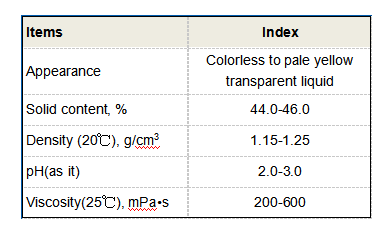water flocculant
Understanding Water Flocculants Their Importance and Applications
In the complex world of water treatment, water flocculants play a crucial role in ensuring that water is clean and safe for consumption. These chemical agents are essential in the process of coagulation and flocculation, where they help remove impurities from water sources. This article will delve into the definition, types, applications, and benefits of water flocculants, highlighting their significance in maintaining water quality.
What are Water Flocculants?
Water flocculants are substances added to water to promote the agglomeration of fine particles into a floc or a larger clump that can be easily removed. They are often used in various industries, including municipal water treatment, industrial processes, and mining, among others. The primary function of flocculants is to enhance the efficiency of the sedimentation process, making it easier to separate solids from liquids.
Types of Water Flocculants
There are several types of flocculants, each tailored to specific applications based on their chemical composition and charge characteristics
1. Anionic Flocculants These have a negative charge and are commonly used in wastewater treatment and mining operations, particularly for materials that carry a positive charge. They effectively aggregate suspended particles, facilitating their removal.
2. Cationic Flocculants With a positive charge, cationic flocculants are effective in treating water with a negative charge. They are often used in the paper industry and for municipal wastewater treatment to promote floc formation.
3. Non-Ionic Flocculants These do not carry any charge and are generally used in specific applications where ionic flocculants may not be effective. They tend to be less aggressive and are suitable for sensitive applications such as food processing.
4. Natural Flocculants Derived from natural sources, such as plant extracts or biopolymers, these flocculants are eco-friendly alternatives that are increasingly being used in water treatment processes.
Applications of Water Flocculants
Water flocculants are applied across various sectors to address specific water quality challenges
1. Municipal Water Treatment In drinking water treatment plants, flocculants help remove turbidity, pathogens, and other impurities, ensuring safe drinking water supply.
water flocculant

3. Mining In mineral processing, flocculants aid in the recovery of valuable minerals by improving solid-liquid separation during the extraction process.
4. Agriculture Flocculants can be used in irrigation systems to improve water quality by removing suspended particles that could clog systems and reduce efficiency.
5. Food and Beverage The food industry employs flocculants to clarify beverages, reduce sedimentation, and enhance product quality.
Benefits of Using Water Flocculants
The use of water flocculants offers several advantages
1. Enhanced Water Clarity Flocculants significantly improve water clarity by removing unwanted particles, which is crucial for both aesthetic and safety purposes.
2. Efficient Sedimentation The aggregation of fine particles into larger flocs accelerates the sedimentation process, allowing for quicker filtration and reduced costs in water treatment operations.
3. Environmental Compliance Effective flocculation can help industries comply with environmental regulations regarding wastewater disposal, thereby minimizing their ecological footprint.
4. Cost-Effective Solutions By improving the efficiency of water treatment processes, flocculants can reduce the overall operational costs for municipalities and industries alike.
5. Versatility With various types of flocculants available, operators can choose an appropriate solution tailored to specific water treatment needs.
Conclusion
Water flocculants are indispensable in the quest for clean water. Their role in enhancing the coagulation and sedimentation processes cannot be overstated. As water quality concerns grow globally, the advancements and applications of flocculants will continue to evolve, ensuring a sustainable approach to water treatment that meets both current and future challenges. Understanding the importance of these agents is crucial for stakeholders in various sectors involved in water management, highlighting their integral role in protecting one of our most vital resources—clean water.
-
Premium Isothiazolinones | Broad-Spectrum Biocidal SolutionsNewsAug.28,2025
-
LK-319 Special Scale And Corrosion Inhibitor For Steel Plants: Advanced Solutions for Industrial Water SystemsNewsAug.22,2025
-
Flocculant Water Treatment: Essential Chemical Solutions for Purification ProcessesNewsAug.22,2025
-
Isothiazolinones: Versatile Microbial Control Agents for Industrial and Consumer ApplicationsNewsAug.22,2025
-
Scale Inhibitor: Key Solutions for Water System Scale PreventionNewsAug.22,2025
-
Organophosphonates: Versatile Scale Inhibitors for Industrial Water SystemsNewsAug.22,2025





